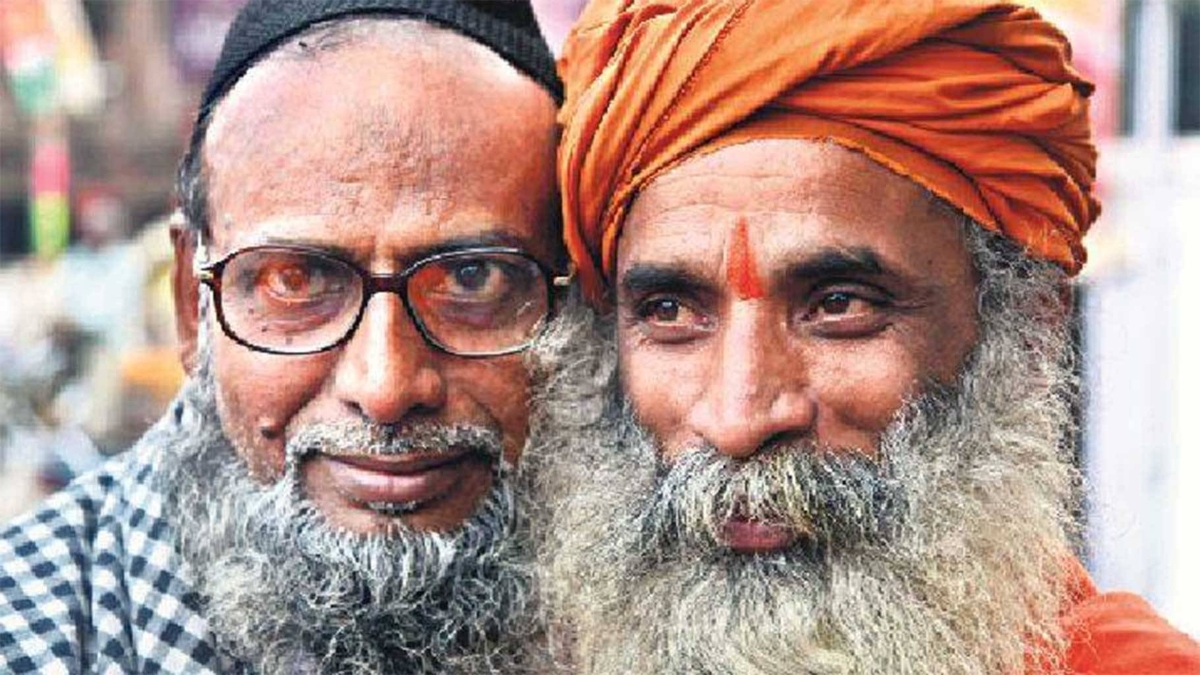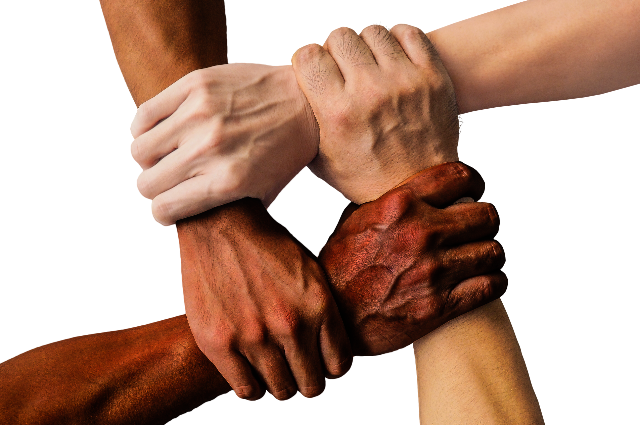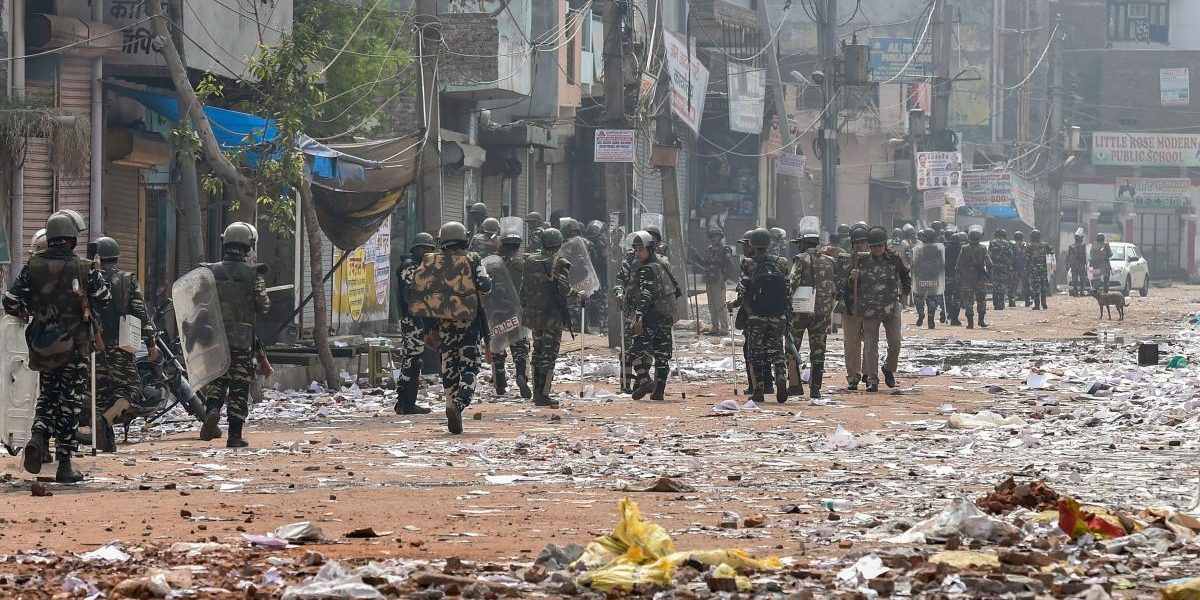The rising trend of communalism and the accompanying violence have created a feeling of insecurity among the religious minorities and ethnic groups. This may just be a fear, but the nation cannot afford to let about one-sixth of the country's population to fall victim to panic, suspicion and insecurity. The events between 1984 and 2002 in different parts of the country give ample evidence and taste of the destructive outcome of the communal virus in its varied forms. Muslims, Sikhs and other religious minorities in India are protected by the Constitution which provides for the existence of perfect justice, tolerance, equality and freedom. But in an age in which religious fundamentalism is on the verge of becoming religious bigotry, intel erance and narrow mindedness, the notion of 'Ram Rajya' is misinterpreted by Muslims to mean the rule of the Lord Ram, i.e., Hindu rule. The presencr of police near the gurudwaras to keep an eye on and to check the hide-outs of terrorists in the religious shrines (as in Amritsar in 1985 and in Kashmir in November 1993 and May 1995) is viewed as interference in religious faith Therefore, to prevent damage to the peace and integrity of the nation, there is a need to analyse and debate on the problem of communalism and communal violence. It has become absolutely important to define 'communalism' today. Also, it is equally pertinent to discover who is 'communal'.
Concept of Communalism
Communalism is an ideology which states that society is divided into religious ommunities whose interests differ and are, at times, even opposed to each other. The antagonism practised by the people of one community against the people of other community and religion can be termed 'communalism". This antagonism goes to the extent of falsely accusing, harming and deliberately meulting a particular community and extends to looting, burning down the homes and shops of the helpless and the weak, dishonouring women, and even killing persons.
Communalism in India
The pluralistic society of India is composed not only of religious groups such as Hindus (80.50%), Muslims (13.40%), Christians (2.30%), Sikhs (1.90%) Buddhists (0.80%), Jains (0.40%), and so on (Census of India, 2011), but these groups are further divided into various sub-groups. Hindus are divided into sects like Arya Samajis, Shivites, Sanatanis and Vaishnavas, while Muslims ar divided into Shias and Sunnis on the one hand, and Ashrafs (aristocrats Azlafs (weavers, butchers, carpenters, oilmen) and Arzals, on the other. The strained relations between Hindus and Muslims have existed for a long time, whereas some Hindus and Sikhs have also started viewing each other with suspicion, particularly after the Operation Blue Star and assassination of Prime Minister Indira Gandhi and the resultant anti-Sikh riots in Delhi in 1984. We also hear of some conflicts between Hindus and Christians and Muslims and Christians too but, by and large, Christians in India do not feel deprived or exploited by other communities. Among Muslims, Shias and Sunnis too bear prejudicial attitudes towards each other. Here, we will mainly analyse Hindu-Muslim and briefly Hindu-Sikh relations.
Hindu-Muslim Relations
fMuslim attacks on India started from the 10th century, but early Muslim conquerors like Mohammad Ghazni and Mohammad Gori were more interested in looting rather than establishing religious dominance. It was when Qutubdin became the first Sultan of Delhi that Islam found a footing in India. Later, it was the Moghuls who consolidated their empire and Islam in the process.

Some of the policies, proselytization efforts, destruction of Hindu temples and construction of mosques over these temples by Moghul rulers aroused communal bickerings between Hindu and Muslim communities. When the British established their dominance in India via the East India Company, they initially adopted the policy of patronizing Hindus, but after the First War of Independence in 1857 in which Hindus and Muslims fought shoulder to shoulder, the Britishers adopted the policy of "divide and rule" which resulted in fostering communal clashes deliberately for keeping intact their hegemony. The relations between Hindus and Muslims were further strained when during the freedom struggle, power politics came into play. Thus, though antagonism between Hindus and Muslims is an old issue, Hindu-Muslim relations in India can be described as a legacy of British rule during the freedom struggle. The communalism between these two communities operates today in a significantly changed social and political milieu. It is now perceived as a problem that impedes and warps the process of development of our country. It is the single largest threat to the secular ideals that are enshrined in our Constitution. The sectarian interests keep on fanning the flames of communal hatred.
Communal Violence
The Concept
The problems and characteristics of communal violence are different from those of student agitations, workers' strikes and peasants' movements. At the conceptual level, we have to differentiate between communal violence and agitations, terrorism and insurgency. This difference has been examined at seven levels: mass mobilization, degree of violence, degree of cohesion, target of attack, flare-ups, leadership, and aftermath experiences (Singh, 1993).
The mass mobilization in agitations is to register protest and voice griev- ances and put demands in the form of processions, demonstrations and gbertos. In communal violence, the involvement of people is mobilized against another community. The movements here are unpredictable, uncheckable and carry an emotional fury and violent expressions which take the form of rioting
The degree of violence and the methods of executing violence also vary in agitations and communal riots. In terrorism, the support of masses is passive, latent and clandestine. Considering the insurrection impossible, it is a few active armed terrorist groups who use violence systematically
Features of Communal Riots
(1) Communal riots are more politically motivated than fuelled by religion. Even the Madan Commission which looked into communal disturbances in Maharashtra in May 1970 had emphasized that "the architects and builders of communal tensions are the communalists and a certain class of politicians-those all-India and local leaders out to seize every opportunity to strengthen their political positions, enhance their prestige and enrich their public image by giving a communal colour to every incident and thereby projecting themselves in the public eye as the champions of the religion and the rights of their community".
(2) Besides political interests, economic interests too play a vigorous part in fermenting communal clashes.
(3) Communal riots seem to be more common in North India than in South and East India.
(4) The probability of recurrence of communal riots in a town where communal riots have already taken place once or twice is stronger than in a town in which riots have never occurred.
(5) Most communal riots take place on the occasion of religious festivals.
(6) The use of deadly weapons in the riots is on the ascendancy
Causes of Communal Violence
Different scholars have approached the problem of communal violence with different perspectives, attributing different causes and suggesting different measures to counter it. The Marxist School relates communalism to economic deprivation and to the class struggle between the haves and the have-nots to secure a monopoly control of the market forces. Political scientists view it as a power struggle. Sociologists see it as a phenomenon of social tensions and relative deprivations. The religious experts perceive it as a diadem of violent fundamentalists and conformists.

The class analysis of communalism requires some attention. The expla nation is that the economic, social and political situations in a society sometimes create such problems and crises for the people that even though they try to come to grips with these crises, they fail to do so. Without attempting to grasp the real causes for this failure, they 'perceive' the other community (numerically much stronger than their own) as the cause of their woes. Communalism is thus a social reality which is generated and reflected in a distorted way
Role of the Police
The role of the police in communal violence is to arrest trouble shooters, Esperse rioters congregated at one place, protect public property from loot and arson, prevent the spreading of rumours (which instigate people of different communities in other districts and states), and maintain public order.

The police cannot perform the role of enforcing law and order without the tive cooperation of politicians, bureaucrats, judiciary and the people at large. It is seen that, by and large, the bureaucrats in our country are ritualists, Politicians function on the basis of vested interests, judicial officials are traditionalists, and people have no confidence in the police. The police have thus, to face many constraints in playing the roles expected of them. Controlling riots and preventing communal violence by police have therefore, to be examined in the background of these constraints
Theories of Communal Violence
Communal violence is a collective violence. When large sections of people in the community fail to achieve their collective goals, or feel that they are being discriminated against and deprived of equal opportunities, they feel frustrated and disillusioned and this collective frustration (or what Feierabends and Nesvold have called 'systematic frustration') leads to collective violence. However, it is not the whole community which launches a violent protest. In fact, the action planned by discontented people against the ruling group or the power elite (against whose ways they protest) is often non-violent. It is only a small band of protesters who consider non-violence ineffective and violence essential for the success of the struggle, who snatch every precipitating oppor- tunity to use violence to assert the strength of their ideology
Communalism in India